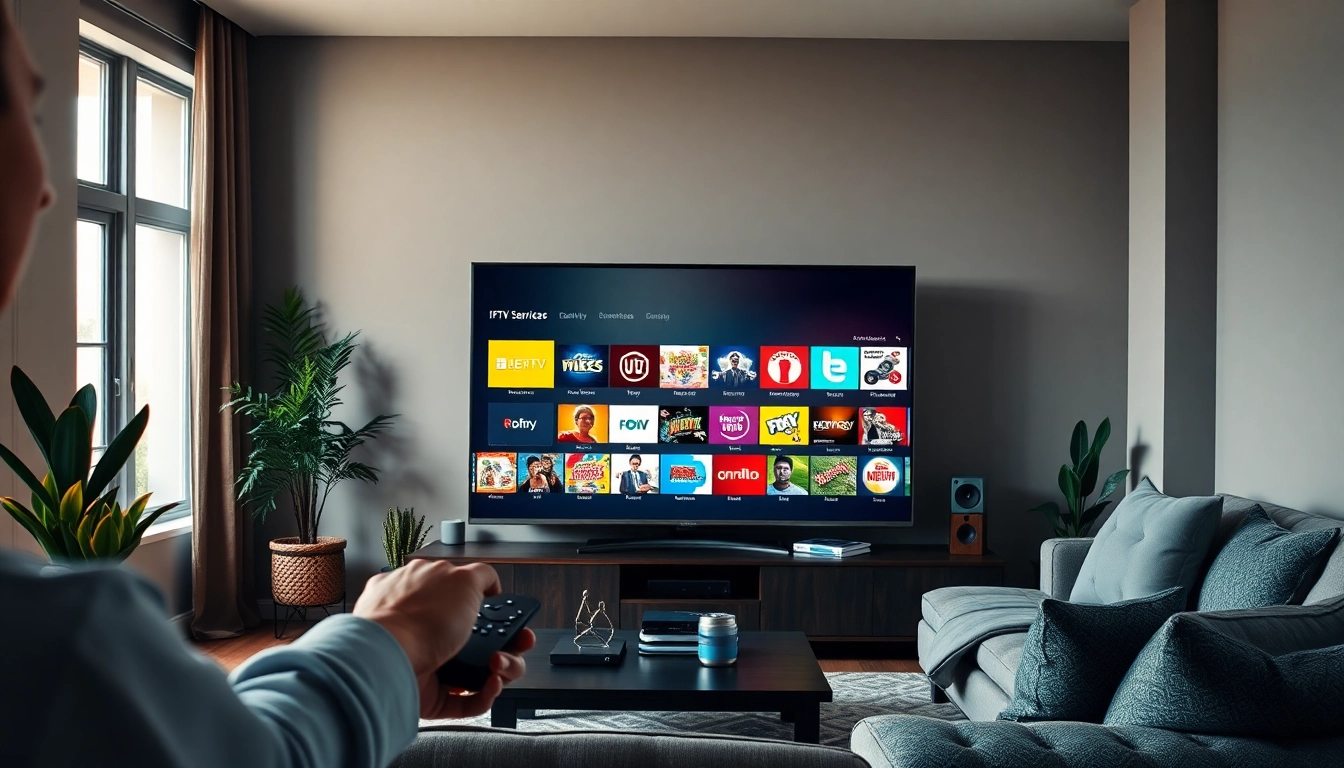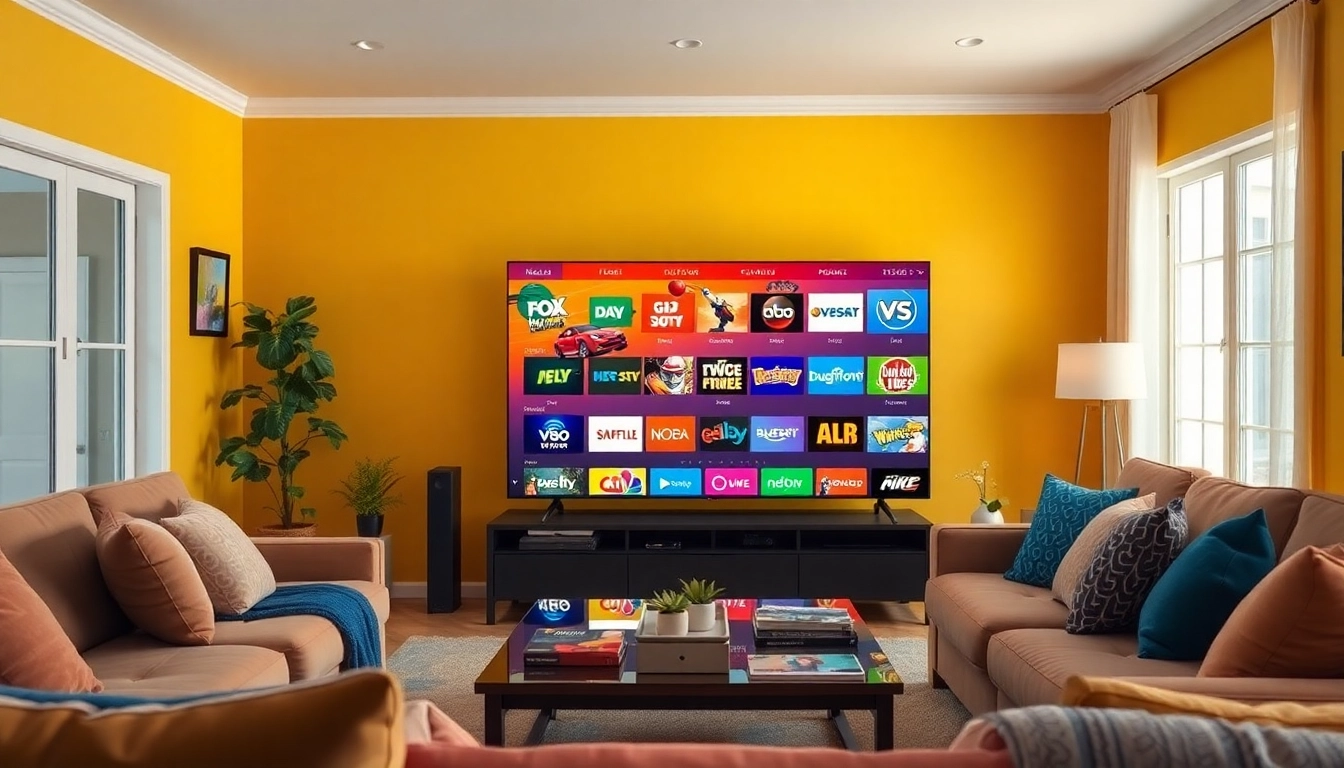Understanding IPTV Services and Their Benefits
What are IPTV Services?
Internet Protocol Television (IPTV) services leverage the internet to deliver TV programming and videos on demand instantly. Unlike traditional cable that transmits signals through physical cables or satellite uplinks, IPTV operates over broadband connections. This emerging technology enables users to stream live and recorded content via their internet service, providing a greater selection of channels and formats. Whether you’re a sports lover, movie buff, or simply enjoy binge-watching on weekends, iptv services can transform your viewing experience.
Advantages of Choosing IPTV Over Traditional Cable
One of the primary advantages of IPTV is its flexibility and convenience. Users can access their preferred content across various devices—smart TVs, tablets, smartphones, and PCs—at any time. Moreover, the customizable nature of IPTV services allows users to select a package that suits their viewing habits, providing a tailored entertainment solution. Key benefits include:
- Cost Efficiency: IPTV usually offers lower subscription rates compared to traditional cable services, with numerous free or trial options available.
- Wide Range of Content: Access to international channels and niche programming that is often unavailable through standard cable services.
- No Contracts: Many IPTV providers do not require long-term contracts, allowing users the freedom to switch services or cancel without penalties.
- Interactive Features: Features like video on demand (VOD), replay TV, and catch-up TV make IPTV a more interactive viewing option.
How IPTV Services Work: A Technical Overview
IPTV operates through a series of components that work together to deliver content over the internet. The key elements of IPTV technology include:
- Content Delivery Network (CDN): IPTV relies on CDNs to ensure that streams are delivered swiftly and efficiently. These are specialized networks that provide streaming content from different servers closer to the user to enhance speed and reduce buffering.
- Set-Top Box (STB): This device serves as a bridge, allowing users to watch IPTV on their TVs. STBs decode the data received over the internet and convert it into a viewable format.
- Protocols: Different protocols, such as IPTV, internet streaming, and multicast, are used to deliver audio and video content. These protocols adjust how data is streamed, depending on the user’s internet speed.
- User Interface: A streamlined and intuitive user interface lets subscribers navigate through channels, on-demand content, and settings easily.
Key Features to Look for in IPTV Services
Channel Variety and Streaming Quality
When selecting an IPTV service, one of the foremost considerations is the variety of channels available. Top-tier IPTV services usually offer:
- Local and International Channels: A comprehensive selection that includes local networks, premium channels, and international broadcasts ensures diverse content for all viewers.
- HD and 4K Streaming: Quality matters. Many subscribers are now expecting at least HD quality, with 4K becoming increasingly commonplace in high-end packages.
- Multi-Device Compatibility: The ability to access content across devices (smartphones, tablets, PCs, and TV) is crucial for a seamless viewing experience.
User Interface and Accessibility Features
A user-friendly interface ensures that subscribers can easily find content without frustration. Features such as personalized recommendations, advanced search options, and easy navigation between live and recorded content enhance user experience. Accessibility features also play a pivotal role, particularly for users with disabilities; options like audio descriptions, closed captioning, and customizable subtitles are essential for inclusivity.
Pricing Models and Subscription Options
Pricing models in IPTV services can vary significantly, and it’s essential to choose a plan that meets your viewing needs and budget. Common structures include:
- Monthly Subscriptions: These typically offer access to all services without long-term commitments, a popular choice for casual viewers.
- Annual Plans: Often come with a discount for upfront payments and are suitable for regular viewers who prefer accessing the same service over a longer period.
- Free Trials: Many providers offer free trials to allow potential subscribers to assess the service before committing to the payment.
Comparing the Best IPTV Services on the Market
Top IPTV Services Reviewed for 2025
As the IPTV landscape continues to grow, several providers have emerged as leaders in 2025. Noteworthy options include:
- Apollo Group TV: Noted for its expansive channel selection and user-friendly interface, Apollo Group TV is a top choice among IPTV users.
- XtremeHD IPTV: This service appeals to sports enthusiasts with a strong focus on live sports channels and events.
- CatchON TV: Commended for its VOD offerings, CatchON provides a vast library of on-demand content.
- ITTechBasics: A reliable option that offers a user-centric interface along with competitive pricing.
User Ratings and Expert Recommendations
User feedback is integral to assessing any IPTV service. Exploring platforms like Reddit and specialized review sites reveals trends in user satisfaction. The following details summarize common themes:
- Users often prioritize reliability and customer service experience when rating their satisfaction with IPTV services.
- Expert recommendations frequently highlight the importance of a robust content library and high streaming quality as decisive factors.
Unique Selling Points of Leading Providers
To distinguish themselves in a crowded market, top IPTV providers emphasize unique selling points. For example:
- Exclusive Content: Some providers partner with networks to deliver exclusive shows or sports events.
- Enhanced Features: Advanced capabilities such as multi-screen viewing, DVR functionality, and cloud services are notable highlights.
- Localized Content: Specific services may focus on regional or ethnic content, catering to niche audiences.
Setting Up Your IPTV Service: A Step-by-Step Guide
Required Equipment for IPTV Implementation
To get started with an IPTV service, you’ll need the following equipment:
- High-Speed Internet Connection: A stable broadband connection is essential for streaming content without interruptions.
- Set-Top Box or Media Player: Depending on your setup, you may need a compatible STB or media player like Amazon Fire Stick, Roku, or Android TV box.
- Compatible Device: Smart TVs or devices capable of supporting IPTV services can enhance your viewing experience.
How to Install and Configure Your IPTV Subscription
Once you’ve selected your IPTV service, follow these steps for installation and configuration:
- Connect Your Device: Connect your STB or smart device to the TV and internet router.
- Download IPTV App: If your provider requires an app, download it from your app store.
- Input Subscription Details: Enter your subscription login details in the app.
- Customize Settings: Adjust settings as per preferences to improve the user experience.
Troubleshooting Common IPTV Issues
IPTV services may encounter occasional hiccups. Here are common problems and their solutions:
- Buffering or Lag: Check your internet speed and ensure your device and connection are stable.
- No Channel Access: Verify your subscription status and ensure you’ve input the correct login credentials.
- Service Disruptions: If the service experiences downtime, check the provider’s website or social channels for updates.
Future Trends in IPTV Services
Emerging Technologies Shaping IPTV
The future of IPTV is shaped significantly by emerging technologies:
- Artificial Intelligence (AI): AI can personalize viewing experiences by understanding user preferences and suggesting content accordingly.
- Augmented Reality (AR) and Virtual Reality (VR): These technologies promise to enhance viewer engagement through immersive experiences.
- 5G Technology: The rollout of 5G networks is set to transform IPTV with faster speeds and lower latency, improving the overall streaming experience.
Changes in Consumer Demand for IPTV Content
The demand for content is continually evolving. Here are prevalent trends noticed in consumer preferences:
- On-Demand Viewing: The preference for watching shows upon request rather than adhering to a set schedule is growing.
- Focus on Niche Genres: Subscribers increasingly seek specialized genres like documentaries, indie films, and regional sports.
- Bundled Services: Users are more inclined to opt for packages that combine IPTV with internet and telecommunication services, creating a one-stop solution.
Predictions for the IPTV Market in the Coming Years
Looking ahead, the IPTV market is anticipated to witness extensive growth. Here are a few predictions:
- By 2026, the global IPTV market is expected to reach a valuation surpassing $100 billion, driven by increased smartphone usage and improved internet access.
- Subscription-based models will continue to lead the market, even as ad-supported free services become more common.
- As new players enter the market, competition will intensify, prompting providers to innovate continually and enhance their offerings.















Leave a Reply